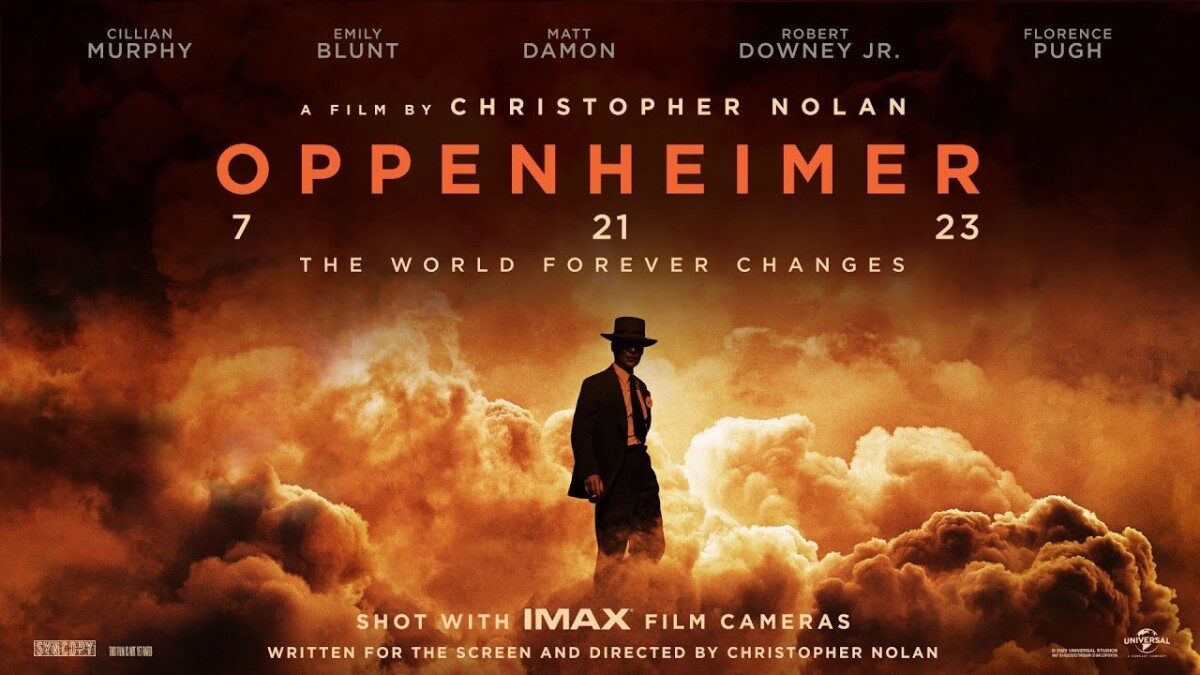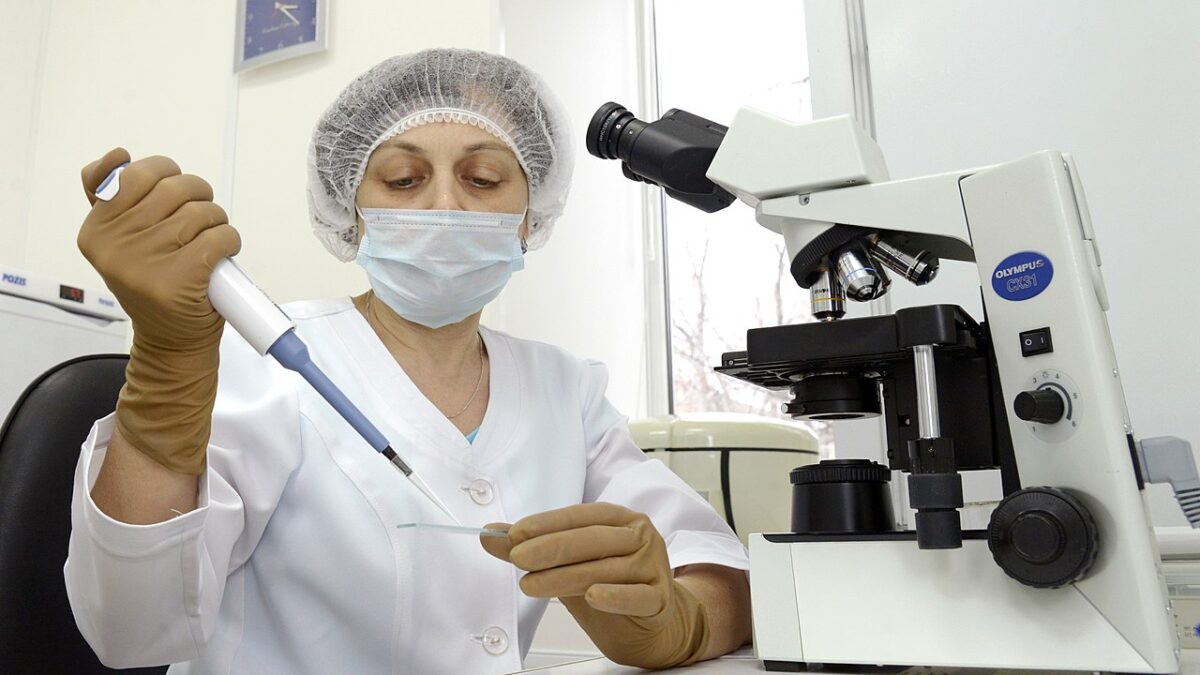Today Universal releases “Oppenheimer,” directed by Christopher Nolan. The IMAX biopic stars Cillian Murphy as J. Robert Oppenheimer, the father of the atom bomb.
Nolan’s film is based on the biography American Prometheus, by Kai Bird and Martin Sherwin. This review summarizes the book. Nolan’s film does not focus on the early career of this brilliant and eccentric academic. For that, we can rewatch “The Absent-Minded Professor” (1961). Cinema can remind us of the 1940s’ heroic battles as well as more cerebral endeavors to develop instruments for detection, navigation, and propulsion.
Oppenheimer’s life holds major questions about the use of power that continue to affect the world today. His team’s scientific advances warrant a much closer look.
Early Life and Career
Oppenheimer (1904-1967) was born in New York to secular Jewish parents. Despite an attack of colitis that delayed his study, Oppenheimer graduated from Harvard University in three years, having majored in chemistry while also studying physics.
After sojourning at Cambridge University, he studied under Max Born at the University of Göttingen, obtaining his doctorate in 1927 at age 23. Before graduating, he and Born published an oft-cited treatise (in German) that simplifies molecular modeling.
He eventually accepted a professorship at the University of California, Berkeley and the California Institute of Technology after further study in Switzerland. Before starting to teach, Oppenheimer was diagnosed with tuberculosis and recuperated with his younger brother, Frank, in New Mexico. He was beloved by students but resented by some colleagues.
Although primarily a theorist, Oppenheimer worked with experimentalist Ernest Lawrence on particle accelerators at Berkeley. His research covered many topics, especially particle physics and quantum mechanics, including comments related to the discovery of the positron. These efforts expanded into astronomy, such as the stellar neutron cores of white dwarfs and the gravitational collapse of massive stars into black holes.
During his academic career, Oppenheimer delved into ancient Sanskrit and read the original Hindu scripture. In 1936, he dated Jean Tatlock, a graduate student of psychiatry at Stanford and a Communist Party member. She twice declined his marriage proposal.
In 1940, he married Katherine “Kitty” Harrison (né Puening). The couple had a son, Peter, and a daughter, Toni.
Subatomic Beginnings
The scientific drama began with laboratory experiments in Berlin. In mid-December 1938, researchers found a chemical anomaly after bombarding uranium with neutrons. They published their findings the following month.
These results were shared with colleague Lise Meitner, who had fled earlier that year from Nazi Germany to Sweden. That Christmas, while collaborating with her nephew, she realized this as evidence of nuclear fission — the splitting of atomic nuclei. The two hastily published a brief letter in Nature in February 1939 announcing their conclusion.
After being informed in October about the possibility of German development of an atomic bomb, President Franklin Roosevelt authorized a commission to evaluate this technical prospect. The Army began a concerted effort in June 1942, followed three months later by the appointment of Leslie Groves and his promotion to brigadier (later major) general as director of the Manhattan Project.
Groves met with Oppenheimer that October, and together they inspected sites in New Mexico for a remote but accessible laboratory. The government purchased a boarding school in Los Alamos, north of Albuquerque.
Despite his lack of administrative experience and concerns about the Communist Party affiliations of his wife Kitty, brother Frank, and former girlfriend Jean Tatlock, Groves considered Oppenheimer’s reputation in physics, rapid grasp of technical impediments, and broad interdisciplinary knowledge as essential for leading a team to develop atomic bombs from heavy elements.
As laboratory director, Oppenheimer successfully recruited many imminent scientists and other specialists. As David Harsanyi notes, the project was “teeming with Soviet spies.”
Exotic Production
The biggest technical challenges for the Manhattan Project involved producing fissile isotopes, which sustain nuclear chain reaction from uranium and plutonium. Isotope separation of an element requires exploiting mass differences by difficult physical processes. Repeating such operations on recycled material is called enrichment.
Several competing techniques were investigated to separate uranium-235 from its very slightly heavier and more common isotope. Nuclear reactor experiments in Chicago demonstrated plutonium creation from uranium decay.
The Manhattan Project constructed a full-scale reactor at Richland, Washington, as the Hanford site along the Columbia River. Other facilities around the country produced specialty materials. Uranium enrichment and plutonium synthesis constituted more than three-quarters of the Manhattan Project’s cost.

Fission Bomb Design
The design challenge for Oppenheimer’s team was enormous. They had to investigate the fission process into a near-instantaneous chain reaction based on meager experimental results. Oppenheimer’s keen ability to comprehend and extol these specialists is a testament to his diligence during those long hours.
Contrary to compartmentalization at other facilities, frequent presentations informed technical personnel of progress and problems across the laboratory. This interdisciplinary exchange of ideas contributed to developing solutions.
The critical mass to produce a self-propagating chain fission reaction depends on the fissile isotope’s purity. To avoid premature disintegration, plutonium requires sophisticated shock compression. The Hungarian mathematician John von Neumann devised a solution: squeezing a subcritical quantity of plutonium in stages via shock waves. This compressed a solid plutonium sphere to a critical state at twice its normal density.
Below is an exploded view of the components for the tested implosion device, resembling more a matryoshka doll in the form of a soccer ball than a massively destructive bomb.

The overlapping convex shock waves drive the pusher into the tamper, crushing the plutonium to criticality. Simultaneously, the shock mixes the polonium and beryllium. Alpha-particle radiation from the polonium prompts the beryllium to rapidly release neutrons, thereby triggering the plutonium into fission.
Testing the ‘Trinity‘
Testing an implosion-type bomb necessitated a remote and isolated site within driving distance of Los Alamos, preferably with a flat area and minimal wind. The government selected the northern end of the Alamogordo Bombing Range in Socorro County, now part of the White Sands Missile Range in New Mexico.
The intense pressure to handle myriad technical problems influenced Oppenheimer’s personal life. Oppenheimer renewed his relationship with Tatlock, who suffered from clinical depression. Tatlock introduced Oppenheimer to the poetry of John Donne.
Her apparent suicide in early 1944 shook him. Oppenheimer selected the name “Trinity” as the site for the first atomic bomb test, presumably in reference to one of Donne’s poems and a tribute to Tatlock.
The Trinity test site was prepared in early 1945 for testing the “Gadget” suspended from a steel tower. President Truman requested the test be conducted prior to July’s Allied conference at Potsdam. With B-29 observation aircraft in position, the “Gadget” was set off at 5:30 a.m. Mountain War Time (MWT) on July 16.

Oppenheimer was elated at the success of the test. He recalled verse 12 from chapter 11 in the Bhagavid Gita: “Now I am become Death, the destroyer of worlds.” It’s shown below in Sanskrit.

Post-War Activity and Controversy
After the military conflict, Oppenheimer returned to CalTech. In 1947, Lewis Strauss (later chair of the Atomic Energy Commission) invited Oppenheimer to direct the Institute for Advanced Physics at Princeton.
During the Korean War period, some former colleagues renewed concerns regarding the political affiliations of Oppenheimer’s associates and family members, and eventually the government revoked his security clearance. The Soviet Union also clandestinely recruited espionage agents to independently develop atomic weapons. Such suspicions affected many decisions.
For example, 1955 saw the deportation of Tsien Hsue-Shen to Mao Zedong’s China after he taught at CalTech, co-founded the Jet Propulsion Laboratory, and debriefed Wernher von Braun in occupied Germany. Tsien became head of the Chinese missile program and ushered a new technological adversary to prominence, as recounted in Thread of the Silkworm by the late Iris Chang.
Twilight and Legacy
Towards the twilight of his life, Oppenheimer lectured and wrote about nuclear energy regulation, as well as the relationship between modern science and societal culture. He succumbed to cancer at age 62. His widow Kitty died from an embolism less than six years later.
Their son Peter inherited an estate in New Mexico and resides there in seclusion. Their daughter Toni received the family beach house in the Virgin Islands but tragically passed there in 1977 from presumed suicide.
Our violent introduction to the atomic age taints humanity’s acceptance of it. The amazing phenomenon of atomic nuclei releasing energy by exchanging nucleons holds enormous promise.
Had fission been discovered a decade earlier or later, it could have benignly provided electrical power. But in an existential military conflict, leaders deemed such patience a luxury America couldn’t afford. So humans turned this fantastic tool into a cudgel, and continue to live under that shadow today.
After Oppenheimer’s passing, Hans Bethe published a biographical summary for the National Academy of Sciences. Nolan reminds us of Oppenheimer as an extraordinary person. The control of the atomic nucleus defines his legacy.










